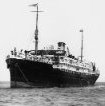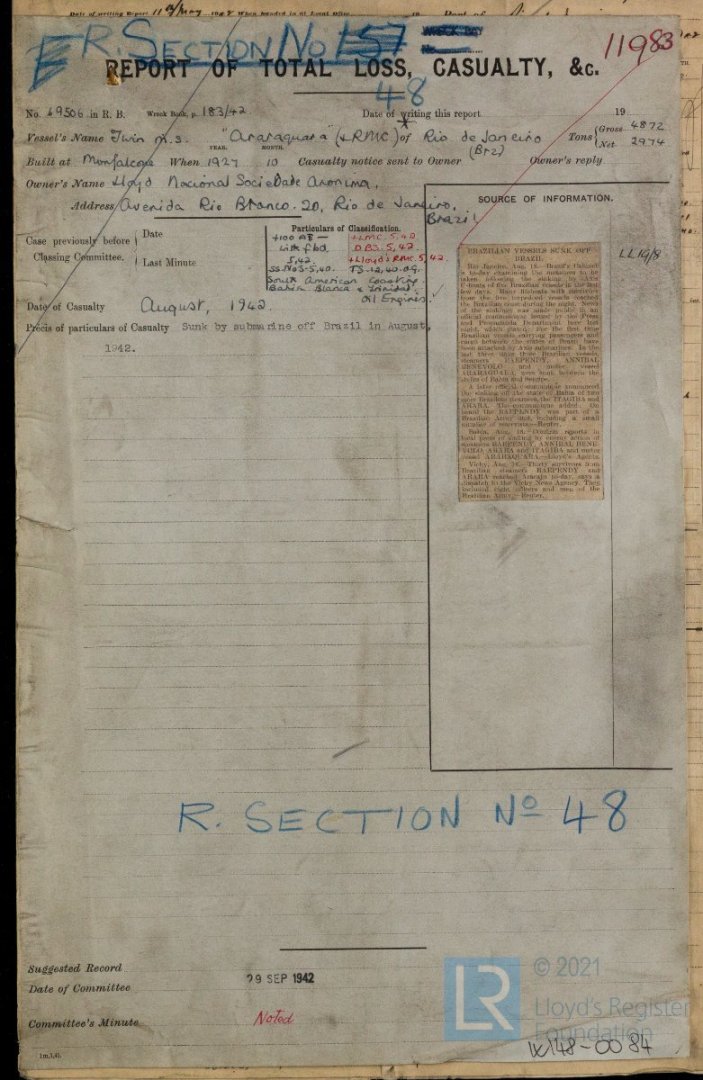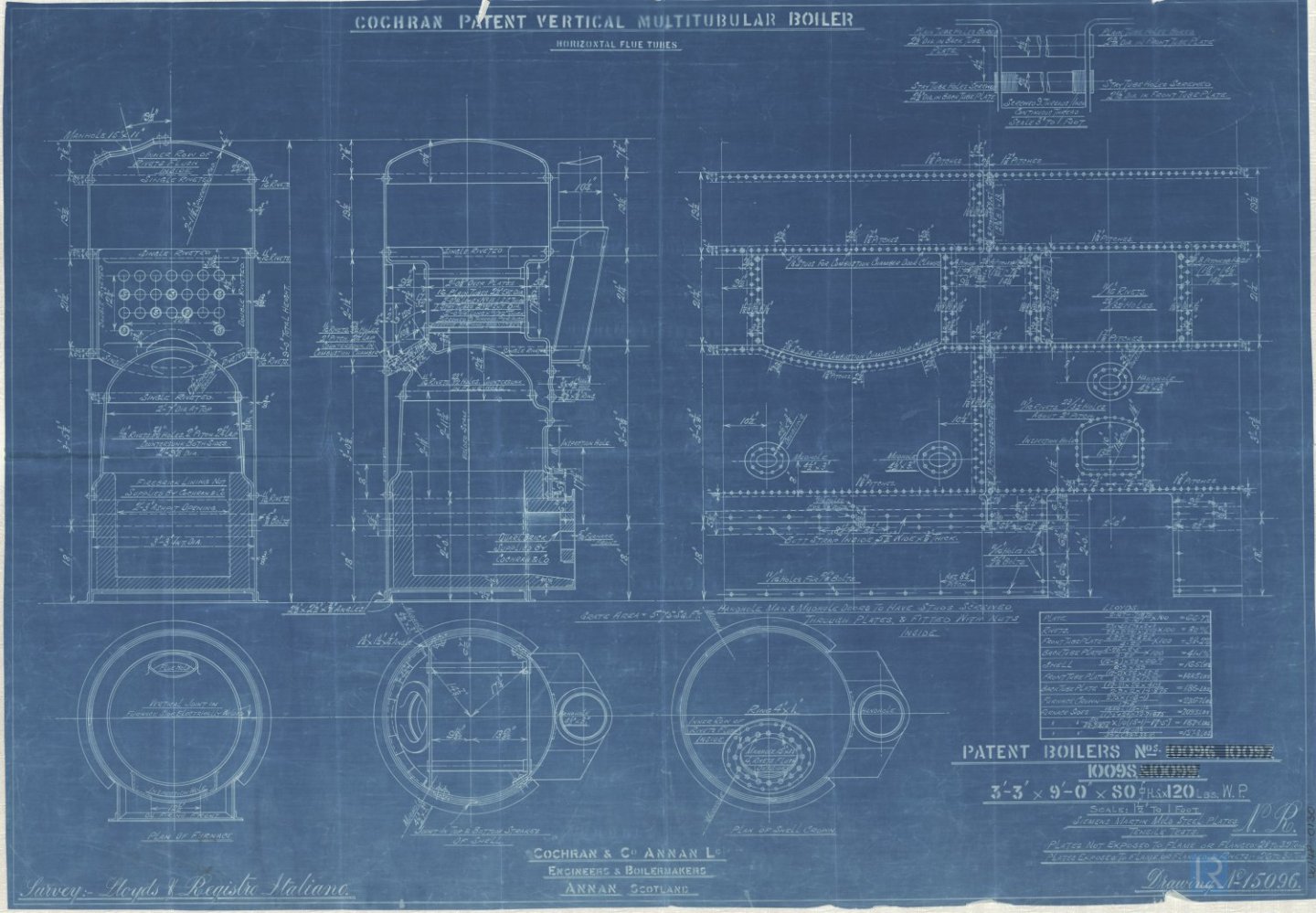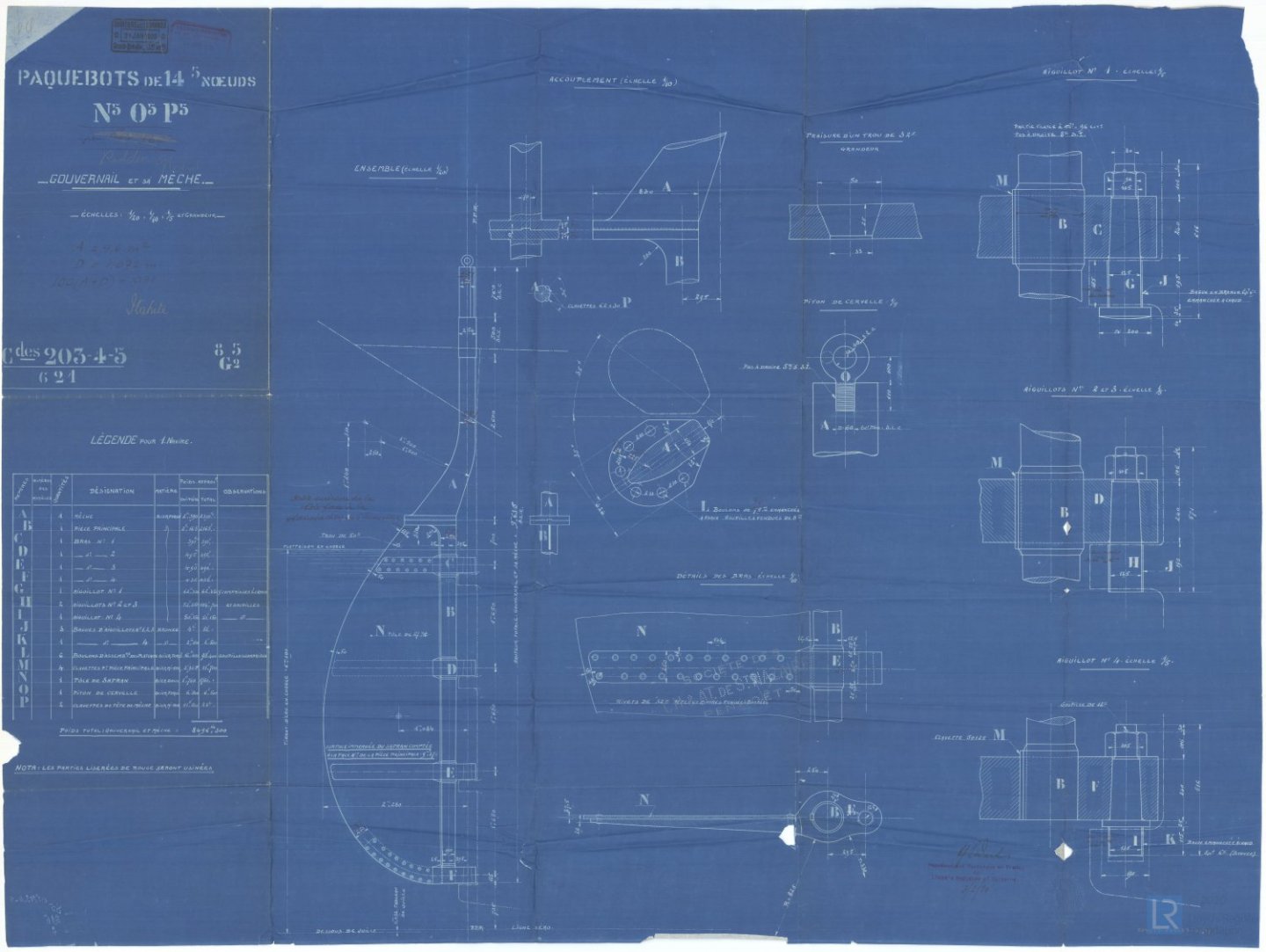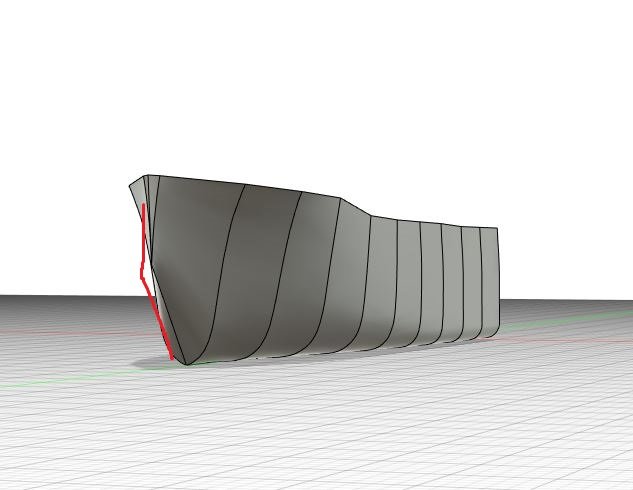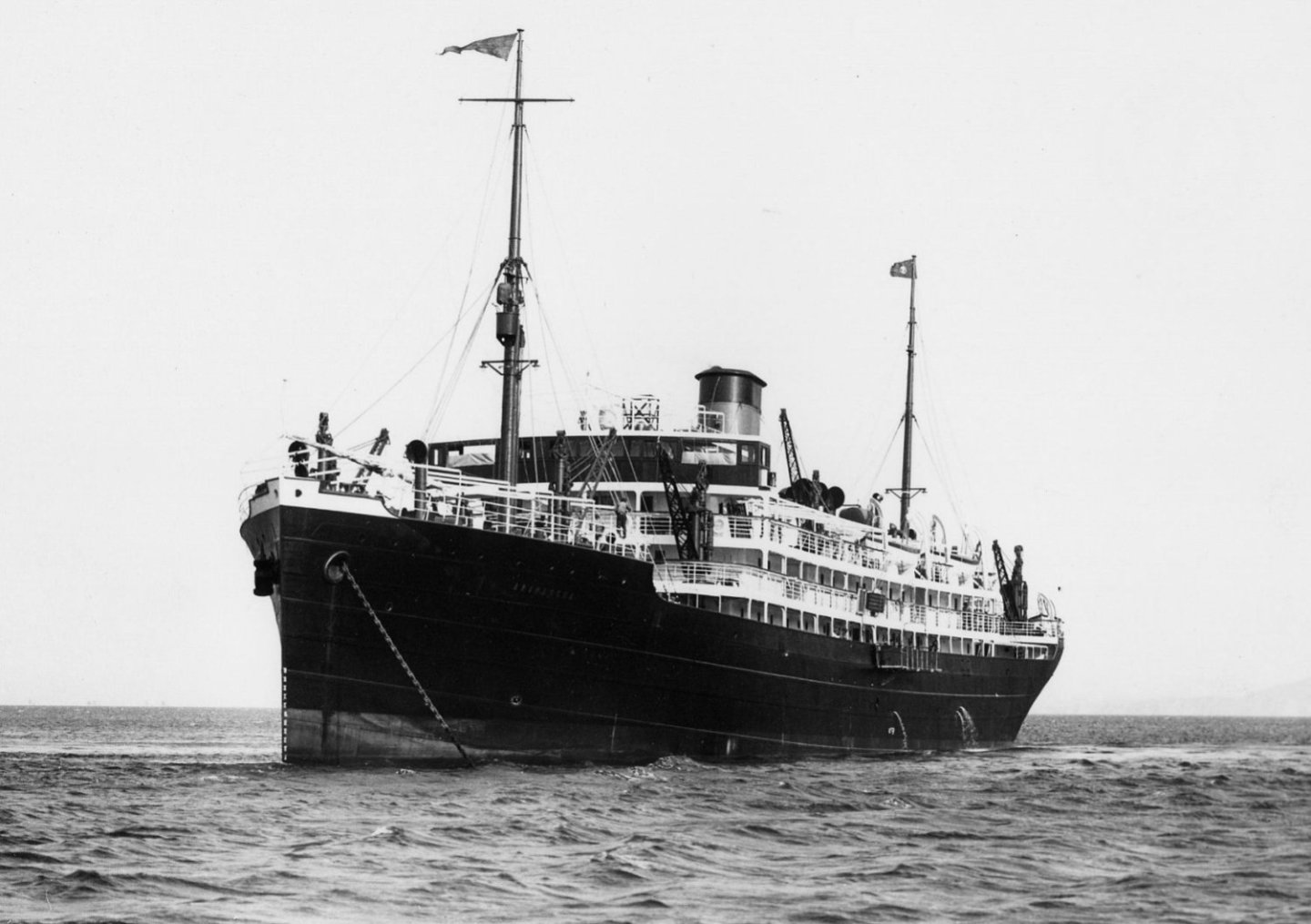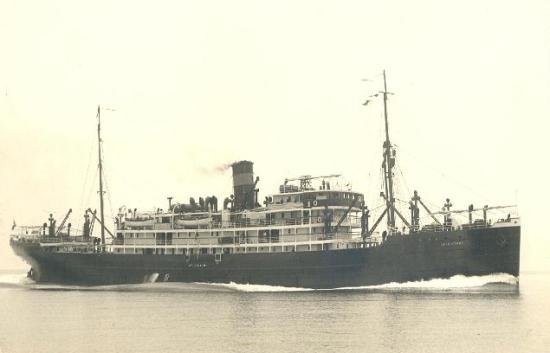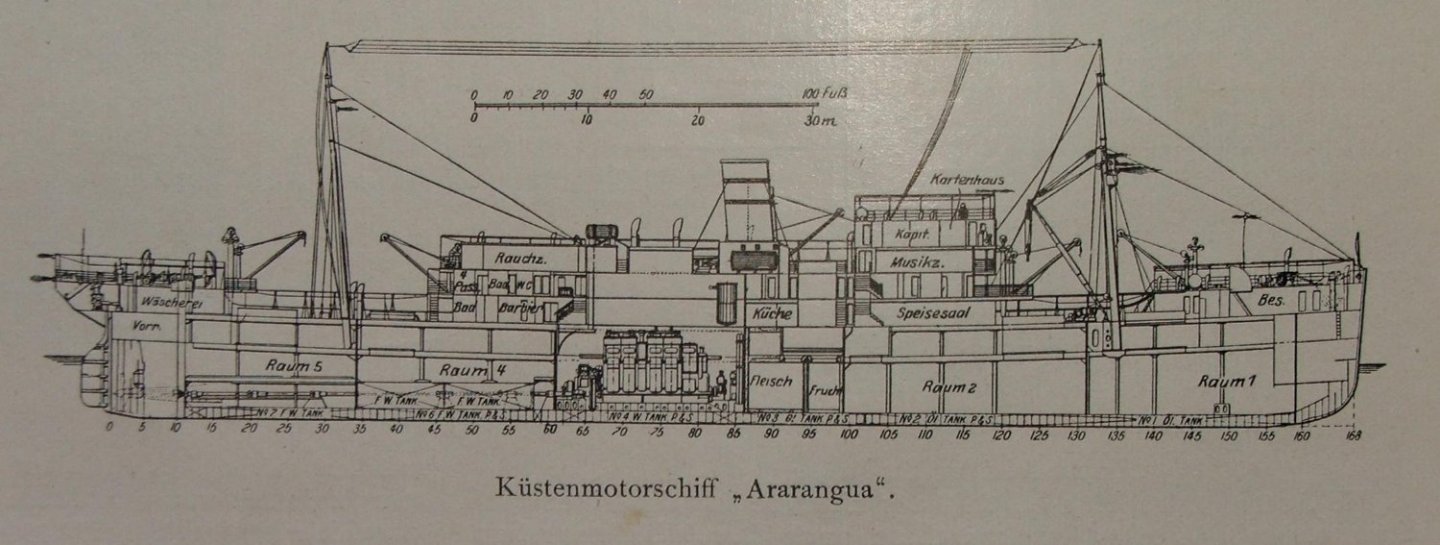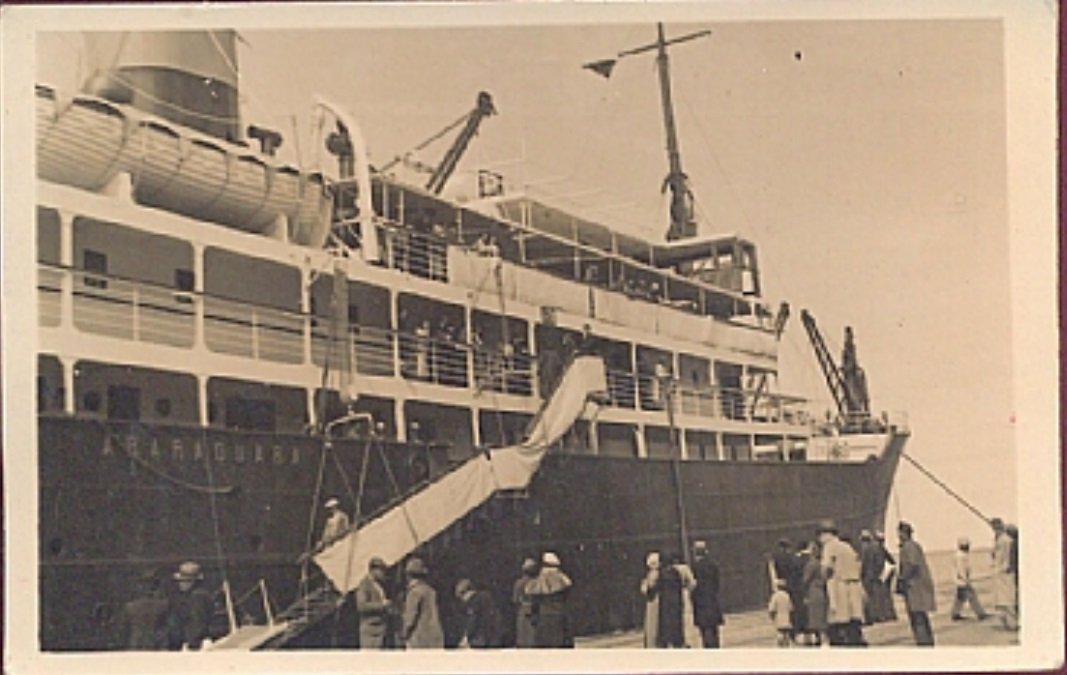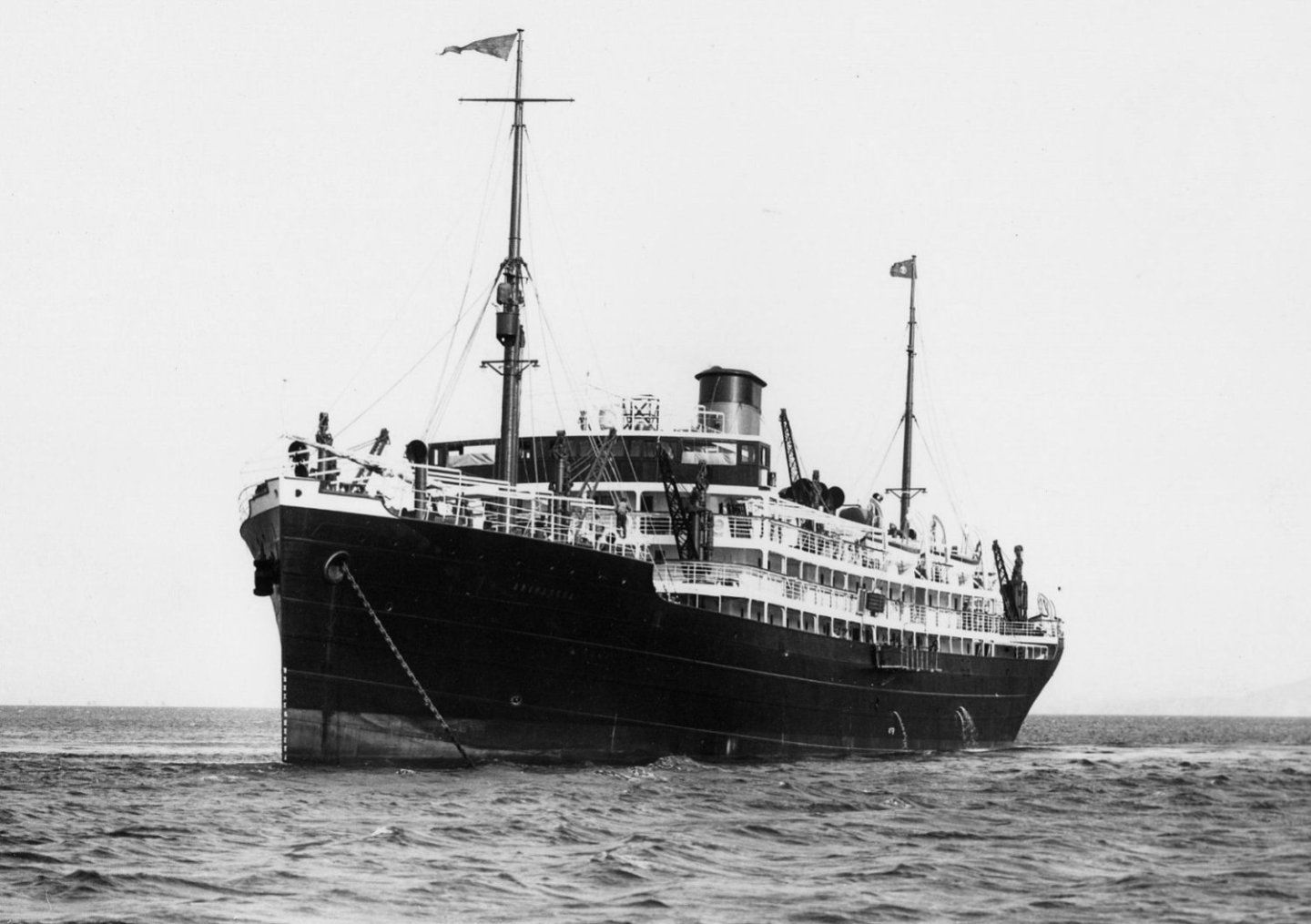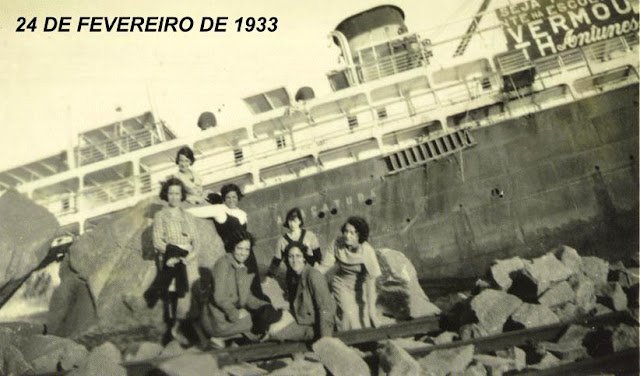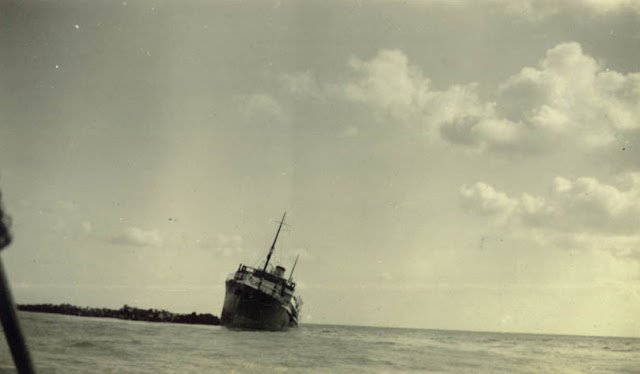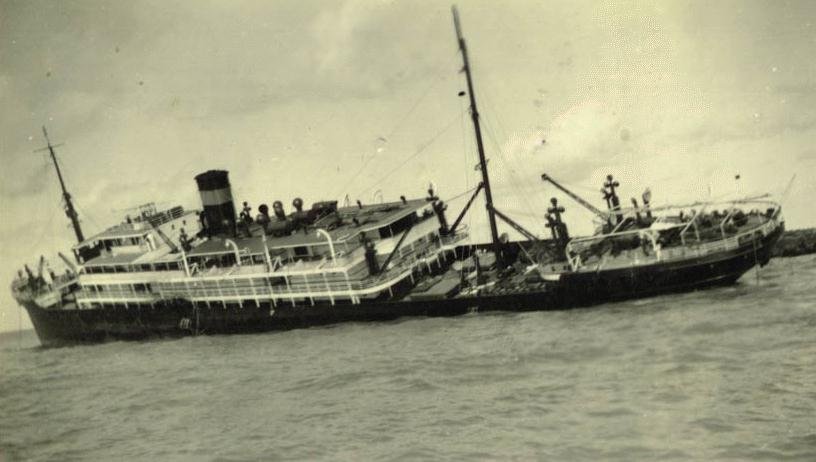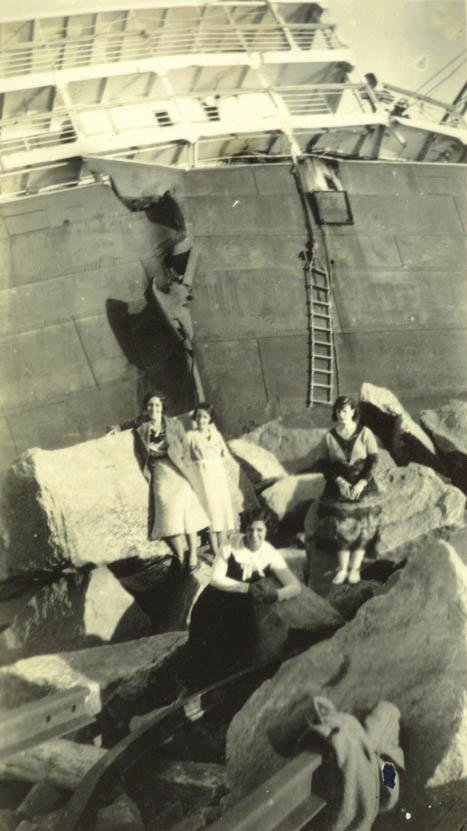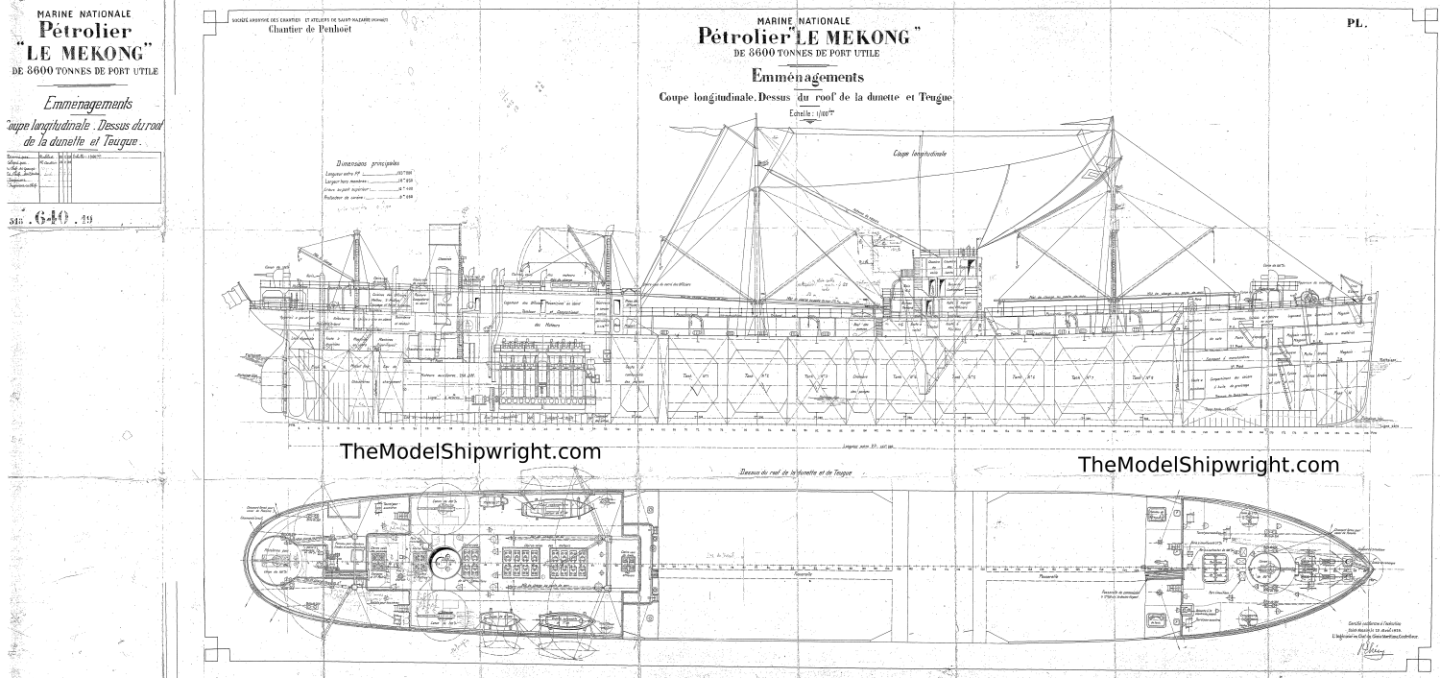-
Posts
7 -
Joined
-
Last visited
-
 GrandpaPhil reacted to a post in a topic:
Araraquara by Zocchi - 1:100 - Brazillian Cabotage Liner
GrandpaPhil reacted to a post in a topic:
Araraquara by Zocchi - 1:100 - Brazillian Cabotage Liner
-
 Valeriy V reacted to a post in a topic:
Araraquara by Zocchi - 1:100 - Brazillian Cabotage Liner
Valeriy V reacted to a post in a topic:
Araraquara by Zocchi - 1:100 - Brazillian Cabotage Liner
-
 mtaylor reacted to a post in a topic:
Araraquara by Zocchi - 1:100 - Brazillian Cabotage Liner
mtaylor reacted to a post in a topic:
Araraquara by Zocchi - 1:100 - Brazillian Cabotage Liner
-
Yes! Finding these plans is very encouraging. Also there are dozens of documents regarding the registration of the ship available, including a report of its loss: This should be a great addition to a display in our local museum, if we get around to that, plus I've noticed I might even be in time for the 100th anniversary of the ship, coming in 2027!
- 15 replies
-
- 1:100
- passenger liner
-
(and 1 more)
Tagged with:
-
 Zocchi reacted to a post in a topic:
Araraquara by Zocchi - 1:100 - Brazillian Cabotage Liner
Zocchi reacted to a post in a topic:
Araraquara by Zocchi - 1:100 - Brazillian Cabotage Liner
-
 KeithAug reacted to a post in a topic:
Araraquara by Zocchi - 1:100 - Brazillian Cabotage Liner
KeithAug reacted to a post in a topic:
Araraquara by Zocchi - 1:100 - Brazillian Cabotage Liner
-
 Keith Black reacted to a post in a topic:
Araraquara by Zocchi - 1:100 - Brazillian Cabotage Liner
Keith Black reacted to a post in a topic:
Araraquara by Zocchi - 1:100 - Brazillian Cabotage Liner
-
 Valeriy V reacted to a post in a topic:
Araraquara by Zocchi - 1:100 - Brazillian Cabotage Liner
Valeriy V reacted to a post in a topic:
Araraquara by Zocchi - 1:100 - Brazillian Cabotage Liner
-
 Tony Hunt reacted to a post in a topic:
Araraquara by Zocchi - 1:100 - Brazillian Cabotage Liner
Tony Hunt reacted to a post in a topic:
Araraquara by Zocchi - 1:100 - Brazillian Cabotage Liner
-
 Tony Hunt reacted to a post in a topic:
Araraquara by Zocchi - 1:100 - Brazillian Cabotage Liner
Tony Hunt reacted to a post in a topic:
Araraquara by Zocchi - 1:100 - Brazillian Cabotage Liner
-
 mtaylor reacted to a post in a topic:
Araraquara by Zocchi - 1:100 - Brazillian Cabotage Liner
mtaylor reacted to a post in a topic:
Araraquara by Zocchi - 1:100 - Brazillian Cabotage Liner
-
 Roger Pellett reacted to a post in a topic:
Araraquara by Zocchi - 1:100 - Brazillian Cabotage Liner
Roger Pellett reacted to a post in a topic:
Araraquara by Zocchi - 1:100 - Brazillian Cabotage Liner
-
Hello, sorry everyone for taking so long to reply, these last two months have been extremely busy on my job! Valeriy, thank you so much for these, it's amazing! I had zero hopes of finding any original drawings of this class, this is incredibly valuable! I found plentiful of plans related to this class on this archive, even some boiler plans for the Araraquara itself: And, amazingly, a very detailed profile plan of the Ararangua, it can shed some light on many questions like the actual deck dimensions: Also there is a lot of plans from other ships, like the Itapage, Itaquice and Itahite, nicknamed in Brazil at the time as the "Itas" (the Araraquara and its siblings were called the "Aras"). The "Itas" were built at the same time, in France and apparently also in the UK, for the same brazilian company: Now, I'm not 100% positive that "Itas" and the "Aras" where sister ships. Some sources here cite them as the same class, and they do have exactly the same length. It is likely they had their differences, having been built in different countries, and I did notice some differences on how the steel frames structure was designed from the midship sections but that's not very relevant for this model. In total I think I found around 20 or so plans for "Aras" and "Itas" on this archive, so, once again, thank you Valeriy, this project just became a lot more fun! I'll compile all these sources together to create a reconstruction plan with as many details as possible. It will take a long while I believe, as I'm having little free time nowadays, but we're here for the fun of it after all. Keith, its a funny quirk with the renderer!
- 15 replies
-
- 1:100
- passenger liner
-
(and 1 more)
Tagged with:
-
 Zocchi reacted to a post in a topic:
Araraquara by Zocchi - 1:100 - Brazillian Cabotage Liner
Zocchi reacted to a post in a topic:
Araraquara by Zocchi - 1:100 - Brazillian Cabotage Liner
-
I don't know if thats what tou mean, but there is an effect I noticed to with the lighting of Fusion 360, it looks like the "skin" of the hull is shrunk inwards betwen the stations, just like the fabric skins in the wings of early aircraft. Thats due to how the algorithm generates the 3d mesh between the input lines. Roger, if thats what you mean it is indeed mistake: The lofting tool inside Fusion can't generate the lower part of the stem correctly without more stations between 1 and 2. I'll have to correct that by drawing more stations from the lines in the plans. Thanks!
- 15 replies
-
- 1:100
- passenger liner
-
(and 1 more)
Tagged with:
-
Zocchi changed their profile photo
-
Hello! I'm still doing research, hoping to find more information on the Araraquara or similar vessels, but for now I've decided to make a model of Le Mekong's hull on Fusion 360 to visualize it's shape in three dimentions. Doing this in Fusion is very straight foward, only some parts of a ship's hull are harder to model, like the lower side of the bow. As can be seen above, the lofting tool on Fusion needs more information to recreat the lower part of the bow. Latter I plan on drawing extra station lines between the 1st and 2st stations to better represent this section. But for now we can have some fun: Araraquara: Le Mekong: And from the pictures of Araçatuba's grounding: And Le Mekong: For now we're looking good, Le Mekong's lines seem to be a decent starting point, the only thing I've notice is that the outward curve towards the top of Araraquara's bow, around the forecastle, seems to be a little bit more pronounced. But that could be in my eyes. So to finish the hull on fusion properly, most likely I'll need to create more lofting lines aparts from those available on those plans. With the hull completely modelled in more detail we can further compare, after that inside Fusion we can edit the station lines individually to further approximate the look of Araraquara. Thanks for reading!
- 15 replies
-
- 1:100
- passenger liner
-
(and 1 more)
Tagged with:
-
Thanks, it is indeed lovely! Yes, this place is amazing! Thanks!
- 15 replies
-
- 1:100
- passenger liner
-
(and 1 more)
Tagged with:
-
 Zocchi reacted to a post in a topic:
Araraquara by Zocchi - 1:100 - Brazillian Cabotage Liner
Zocchi reacted to a post in a topic:
Araraquara by Zocchi - 1:100 - Brazillian Cabotage Liner
-
 Zocchi reacted to a post in a topic:
Araraquara by Zocchi - 1:100 - Brazillian Cabotage Liner
Zocchi reacted to a post in a topic:
Araraquara by Zocchi - 1:100 - Brazillian Cabotage Liner
-
Yes, thats a great ideia! They might not have plans but even photographs from ships built in Italy in that time would be very helpfull, the hardest part of this project seems to be accurately representing te equipment on the superstructure of the ship
- 15 replies
-
- 1:100
- passenger liner
-
(and 1 more)
Tagged with:
-
 Zocchi reacted to a post in a topic:
Araraquara by Zocchi - 1:100 - Brazillian Cabotage Liner
Zocchi reacted to a post in a topic:
Araraquara by Zocchi - 1:100 - Brazillian Cabotage Liner
-
 Zocchi reacted to a post in a topic:
Araraquara by Zocchi - 1:100 - Brazillian Cabotage Liner
Zocchi reacted to a post in a topic:
Araraquara by Zocchi - 1:100 - Brazillian Cabotage Liner
-
Hello everyone, After some years of lurking, I've finally created an account as I'm about to start a project that might be interesting. I'm from Brazil and have always been interested in maritime history and scale modeling in general, recently I've made a very interesting discovery. There was a passenger ship named after my hometown, Araraquara, located in southeastern Brazil. This ship was built by Cantiere Navale Trestrino in Italy, 1927, it was part of the Ararangua Class, comprising of 9 total sister ships bought by Lloyd Nacional in the late 20s. After serving for 14 years with Lloyd it was sunk by U-507, a Type IXC U-boat, who inexplicably sunk several neutral ships around the Brazilian coast in a matter of days. "The first was the Brazilian Baependy on 16 August, which was torpedoed and sunk with 270 civilian lives. A few hours later the Araraquara was sunk, killing 131 people, followed by the Annibal Benevolo, on which 150 civilians drowned. The next day the slaughter continued, the Itagiba sunk within sight of the city of Valença, killing 36, and the Arara similarly sunk with 20 deaths as she picked up the survivors of the Itagiba. Two days after this, the tiny sailing vessel Jacyra was sunk, and a Swedish ship was torpedoed three days after that. In just one week, U-507 had sunk seven ships of 18,131 GRT and killed over 600 people, all of them neutral civilians." https://en.wikipedia.org/wiki/German_submarine_U-507 The sinking of these Brazilian ships was the central factor for our involvement in the war. Baependy was the first one sunk, with 306 passengers onboard, and the Araraquara was sunk just a few hours latter, killing 131 people. The Araraquara was 115 meters long(about 380 feet), 16 meters wide(~50 feet) and had 4870 gross register tons. Besides being named after my city of origin and being part of one of the most tragic and important moments of our maritime history, this vessel had very good looking lines and was small enough to be modeled comfortably in 1:100, a scale I've always wanted to work in. So this looked like a good project to go after. I have some friends on the local historic heritage committee, and I'll be proposing to them the inclusion of a section on this ship and its tragedy in our local museum, so a scale model of it would go together well. The problem is, other than the images on wikipedia and a few other websites, there was really no information on it that could be found online. All this photographs are in very low resolution and have been posted years ago, so trying to contact however digitized them for original prints would be a challenge. I was lucky enough that someone included on wikipedia a picture from a 1927 german magazine on maritime engineering who covered the ship, including a scaled side cross-section view of the ship, at least I'm not starting from nothing: My first bet was contacting the shipyard who built it, it was bought in the 1980s by Fincantiere, and as e-mailing is free, there was no reasong not to try. It would be very unlikely that I could get a set of plans this way, but I've given it a shot. After a few days I got an answer confirming that this ship was indeed built by them and although they didn't have any technical drawings of it archived, they've sent me this beautiful picture of the ship, in high resolution(courtesy of FINCANTIERI S.p.A. - All rights reserved): After seeing this image my fate was sealed, I had to build it, it was a beautiful vessel. I have also found pictures of her sister ship Araçatuba, named after another city nearby, who was scrapped after hitting rocks on the coast of Brazil in 1933, although this pictures are also in low resolution, their angles are helpful to determine some of the shapes and details of the ship: Considering this is a project without plans, only photographs and a single cross-section view, I'm working now on collecting photographs and plans of similar ships so I can create a mosaic from a lot of different sources, hopefully gathering enough information to create a half-decent representation of the ship. Right now the best easy online "match" I've found for plans is from the Le Mekong, a french cargo ship from 1928 that was around 10% longer than the Araraquara, and generally seems to have very similar hull lines and superstructure equipment. So my first step was loading these plans and the Araraquara cross section on CAD so I could draft around it having a better idea of how good of a match this is: Here he wave our plans laid on cad to be traced over: And here we have in RED the outline of the Araraquara hull and in GREEN the outline of the Le Mekong hull scaled down proportionally to the length of the Araraquara: As we can see, I believe this is a good match, the forecastle is proportionally about the same length both hulls are about the same height, and only the aftercastle is longer on the Mekong. Being that the general lines seem to be similar on the Le Mekong, so I believe this is my best course of action for now. I'll keep looking for plans(any tips are welcome), the ideal would be to find plans for a passenger ship of the same tonnage built around the same time in Italy, but we work with what we got. My first step will be modeling the hull of the Le Mekong on Blender to compare it with the hull of the Araraquara and the Araçatuba seem on the pictures, take note of eventual differences and correct after that, ideally to get as close as possible to the hull shape we see on the photographs inside blender before actually making a definitive set of plans for the Araraquara. Thanks for reading! I hope I finish this one, it will take a while!
- 15 replies
-
- 1:100
- passenger liner
-
(and 1 more)
Tagged with:
About us
Modelshipworld - Advancing Ship Modeling through Research
SSL Secured
Your security is important for us so this Website is SSL-Secured
NRG Mailing Address
Nautical Research Guild
237 South Lincoln Street
Westmont IL, 60559-1917
Model Ship World ® and the MSW logo are Registered Trademarks, and belong to the Nautical Research Guild (United States Patent and Trademark Office: No. 6,929,264 & No. 6,929,274, registered Dec. 20, 2022)
Helpful Links
About the NRG
If you enjoy building ship models that are historically accurate as well as beautiful, then The Nautical Research Guild (NRG) is just right for you.
The Guild is a non-profit educational organization whose mission is to “Advance Ship Modeling Through Research”. We provide support to our members in their efforts to raise the quality of their model ships.
The Nautical Research Guild has published our world-renowned quarterly magazine, The Nautical Research Journal, since 1955. The pages of the Journal are full of articles by accomplished ship modelers who show you how they create those exquisite details on their models, and by maritime historians who show you the correct details to build. The Journal is available in both print and digital editions. Go to the NRG web site (www.thenrg.org) to download a complimentary digital copy of the Journal. The NRG also publishes plan sets, books and compilations of back issues of the Journal and the former Ships in Scale and Model Ship Builder magazines.


